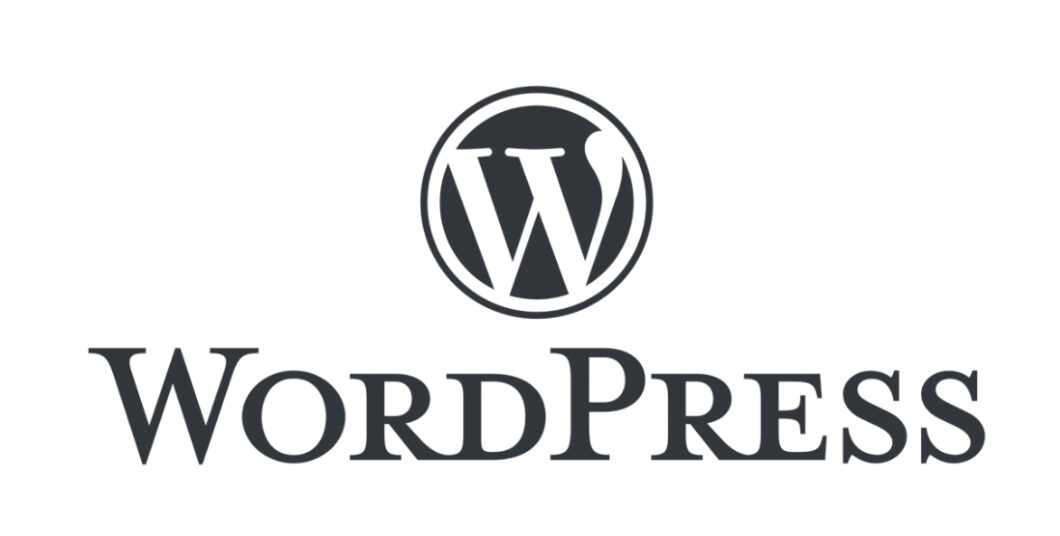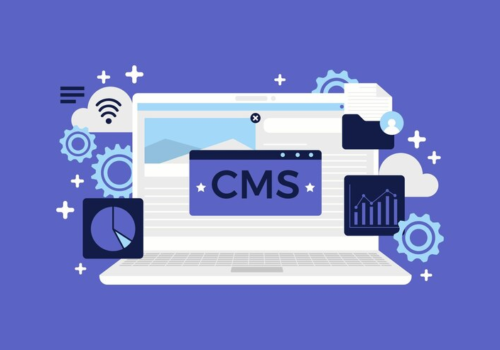Kentico vs WordPress: Detailed CMS Comparison
As the digital landscape continues to expand, choosing the right content management system (CMS) becomes crucial for businesses and individuals alike. Two popular options are Kentico and WordPress, each with its unique features and capabilities. In this post, we’ll compare Kentico and WordPress to help you decide which is best suited for your website needs.
Overview
Kentico stands out in the CMS landscape as an all-in-one platform, encompassing CMS, E-commerce, and Online Marketing functionalities. This integrated approach makes it an exceptional choice for enterprise-level websites and online stores that require a comprehensive suite of tools. Kentico’s rich set of features includes advanced content management capabilities, a powerful online store solution, and sophisticated marketing tools, all within a single platform. Its flexibility is a key advantage, allowing businesses to tailor the platform to their specific needs, whether they are managing complex content structures, handling high-volume e-commerce transactions, or executing intricate marketing campaigns.
As a robust solution, Kentico is particularly well-suited for large organizations that require a scalable and reliable platform. Its ability to integrate with various third-party systems and its support for custom development make it a versatile choice for businesses with complex requirements. The platform’s focus on delivering a seamless user experience, both for customers and content managers, helps in creating efficient and effective digital strategies. Additionally, Kentico’s emphasis on security and performance ensures that enterprise-level websites and online stores can operate smoothly and securely.
WordPress, originally a blogging platform, has evolved significantly over the years into a versatile CMS. Its transformation into a full-fledged content management system has made it a top choice for a wide range of websites, from simple blogs to complex corporate sites. Renowned for its ease of use, WordPress allows individuals and businesses to create and manage their online presence without requiring extensive technical knowledge. This accessibility is one of the key reasons behind its immense popularity.
The extensive customization options available in WordPress are another major draw. With thousands of themes and plugins, users can easily modify the appearance and functionality of their sites to meet their specific requirements. This level of customization makes WordPress suitable for a diverse array of websites, catering to different aesthetics and functionalities.
WordPress’s massive global community is one of its greatest strengths. This community contributes to a rich ecosystem of themes, plugins, and resources, as well as offering support and collaboration opportunities. For users and developers alike, this means access to a wealth of knowledge, tutorials, and assistance, making it easier to build, maintain, and enhance their websites.
Both Kentico and WordPress serve distinct purposes in the digital landscape. Kentico, with its integrated approach, is ideal for enterprise-level businesses needing a comprehensive, scalable, and flexible solution. WordPress, on the other hand, is perfect for a broad range of users seeking ease of use, extensive customization options, and the support of a vibrant global community. The choice between the two depends on the specific requirements, scale, and objectives of the website in question.
User Interface and Ease of Use
- Kentico: Offers a comprehensive dashboard with a wide range of functionalities. It’s more complex than WordPress but provides more out-of-the-box features for enterprise solutions;
- WordPress: Known for its user-friendly interface, it’s great for beginners and allows for quick website setup with minimal technical knowledge.
Customization and Flexibility
- Kentico: Highly customizable with a focus on enterprise-level solutions. Offers a more integrated approach to complex functionalities like e-commerce, marketing automation, and CRM integrations;
- WordPress: With thousands of themes and plugins, it offers limitless customization possibilities. It’s a go-to for a custom-tailored website accessible to users of all skill levels.
SEO and Marketing Tools
Kentico differentiates itself in the CMS market with its built-in SEO and marketing tools, which are an integral part of its all-in-one approach. These features are designed to enhance the online presence and performance of websites without the need for external plugins or applications. The platform includes tools for SEO optimization, ensuring that content is easily discoverable and ranks well in search engine results. This includes features for metadata management, URL optimizations, and sitemap generation, which are crucial for any website looking to improve its SEO.
In addition to its SEO tools, Kentico offers advanced marketing features like A/B testing, email marketing, and automation. A/B testing allows website managers to experiment with different versions of a page to determine which performs better in terms of user engagement and conversion rates. This feature is invaluable for optimizing the user experience and increasing the effectiveness of the website. Email marketing capabilities enable businesses to create, send, and track email campaigns directly from the Kentico platform, facilitating seamless communication with their audience. Moreover, the automation feature in Kentico is a powerful tool for creating personalized user experiences. It allows businesses to automate and customize various aspects of their website, from content delivery to user interactions, based on predefined triggers and user behavior.
WordPress, known for its flexibility and ease of use, offers extensive SEO capabilities, mainly through its vast array of plugins. While the core platform is SEO-friendly, most advanced SEO tools and features require additional setup through these plugins. One of the most popular SEO plugins is Yoast SEO, which provides a comprehensive suite of tools to optimize websites for search engines. Yoast SEO helps users with aspects such as keyword optimization, readability analysis, and generating XML sitemaps, which are essential for good SEO practice. It also provides valuable insights and suggestions to improve content and ensure that it meets the best SEO standards.
Although WordPress requires the use of external plugins for advanced SEO features, this approach offers flexibility and customization. Users can choose from a wide range of SEO plugins based on their specific needs and preferences. This modular approach allows for the addition of features as required, ensuring that the website remains lightweight and only includes necessary functionalities. The SEO plugins in WordPress are typically user-friendly, making it easy for website owners and content creators to implement SEO best practices without needing in-depth technical knowledge.
Kentico’s integrated approach provides built-in SEO and marketing tools, including A/B testing, email marketing, and automation, making it a comprehensive solution for businesses looking to streamline their online marketing efforts. On the other hand, WordPress offers extensive SEO capabilities through its plugins, such as Yoast SEO, allowing for a more tailored and flexible approach to search engine optimization. The choice between Kentico and WordPress in terms of SEO and marketing tools depends on the user’s preference for an all-in-one solution versus a more modular, plugin-based approach.
Performance and Security
- Kentico: Known for robust security features, making it a preferred choice for businesses with sensitive data. It also offers strong performance optimization tools;
- WordPress: While secure, it can be vulnerable due to third-party plugins. Regular updates and maintenance are crucial for security and performance.
Pricing
Kentico, positioned as an enterprise solution, naturally comes with a higher price tag, reflecting its comprehensive range of features and capabilities. This cost is primarily associated with licensing fees, which are a standard part of using the Kentico platform. These fees vary depending on the scale and specific requirements of the project, such as the number of domains and the level of support needed. For large businesses and organizations that require a robust, scalable, and feature-rich CMS, the investment in Kentico can be justified by the value it brings in terms of efficiency, functionality, and integrated marketing tools.
In addition to licensing fees, the overall cost of deploying a Kentico-based solution can include potentially higher development costs. Given its enterprise nature and the complexity of its features, Kentico projects may require experienced developers who are familiar with its architecture and capabilities. This need for specialized skills can lead to increased costs in terms of development and maintenance. However, for businesses that require a high level of customization and integration with other enterprise systems, these costs are often a necessary investment for achieving the desired digital strategy and functionality.
WordPress, in contrast, is an open-source platform that is free to use. This lack of licensing fees makes WordPress an attractive option, especially for small to medium-sized businesses, individual bloggers, and start-ups. However, while the WordPress software itself is free, there are associated costs that come into play when setting up and maintaining a WordPress site. These costs can include hosting, which is necessary to make a website accessible online. Hosting costs vary depending on the provider and the specific needs of the website, such as bandwidth and storage requirements.
Another cost factor for WordPress sites is the use of themes and plugins. While there are many free themes and plugins available, premium options often come with a price. These premium themes and plugins offer additional features, support, and customization options, which can be important for businesses looking to create a more professional and feature-rich website. Furthermore, while WordPress is known for its user-friendly interface, some projects may require custom development work to achieve specific functionalities or designs. Hiring developers or agencies for custom work can add to the overall cost, especially if the project is complex or requires ongoing maintenance and updates.
Kentico, as an enterprise-level solution, entails licensing fees and potentially higher development costs, making it a significant investment primarily suitable for larger businesses and organizations. WordPress, while free to use as an open-source platform, can also incur costs related to hosting, premium themes, plugins, and custom development, depending on the complexity and requirements of the website. The choice between Kentico and WordPress will often come down to balancing the specific needs of a project with the available budget and resources.
Community and Support
Kentico distinguishes itself with its dedicated support team and a growing community, which are vital resources for users, especially those in enterprise environments. The dedicated support team is a significant advantage for businesses that rely on their digital platforms for critical operations. This team provides timely and professional assistance, helping to resolve technical issues, offer guidance on best practices, and ensure that the Kentico platform runs smoothly and efficiently. For organizations that require a high level of reliability and support, Kentico’s dedicated team can be a deciding factor in choosing this CMS. Alongside professional support, Kentico also offers comprehensive documentation. This documentation is an invaluable resource for developers and content managers alike, providing detailed instructions, best practices, and insights into the full capabilities of the platform. Whether it’s for troubleshooting, learning new features, or exploring advanced functionalities, the documentation serves as a first point of reference for Kentico users.
The Kentico community, though smaller than some of its counterparts, is actively growing. This community includes developers, content managers, and business users who share knowledge, create resources, and offer peer support. The community forums and user groups are platforms for exchanging ideas, solving problems, and sharing experiences, which enrich the overall Kentico user experience. WordPress, on the other hand, boasts a massive and active global community. This community is one of WordPress’s most significant assets, providing an extensive network of support and resources. Users of WordPress benefit from a wide range of tutorials, both official and created by community members. These tutorials cover almost every aspect of using WordPress, from basic setup and content management to advanced theme development and plugin integration.
In addition to tutorials, WordPress has an abundance of forums where users can seek help and advice. These forums are a hub for problem-solving, with community members ranging from novice users to experienced developers contributing their expertise. This peer support system is particularly beneficial for troubleshooting and learning through real-world scenarios.

Professional support services are also readily available in the WordPress ecosystem. Many third-party companies specialize in WordPress development, maintenance, and support, providing expert services for users who require more personalized assistance. This availability of professional services makes WordPress a versatile platform suitable for a wide range of users, from individuals managing personal blogs to businesses with complex website requirements.
Kentico, with its dedicated support team, comprehensive documentation, and growing community, offers a robust support structure, particularly appealing to enterprises. WordPress, with its massive, active community, a plethora of tutorials, forums, and availability of professional support services, provides an extensive support network that caters to a diverse user base. The support systems of both platforms play a crucial role in their usability and user satisfaction, and the choice between them can be influenced by the level and type of support a user or organization requires.
Conclusion
Kentico and WordPress cater to different needs. Kentico is ideal for large businesses and enterprises requiring a comprehensive, integrated solution. WordPress, on the other hand, is perfect for those who prioritize ease of use, customization, and a vast support community. Your choice will depend on your specific website requirements, budget, and technical expertise.





